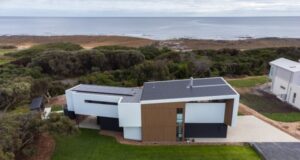
Learn the difference between variable and fixed interest loans – and get the information you need to decide which is right for you.

Choosing the right interest rates can make a huge difference to your repayments.
When you get a construction loan or a mortgage, you’ll need to pay interest back to the lender on top of what you’ve borrowed – this is how the lender makes money from the arrangement. There are a couple of different ways in which interest is calculated – and choosing the right one can make a significant difference to how much you’re paying at any given time.
How do variable interest home loans work?
A variable interest rate mortgage is a loan where the interest rate you’re charged on your loan increases and decreases depending on the cash rate set by the Reserve Bank of Australia (the RBA).
On the first Tuesday of every month, the RBA officially meets to discuss and consider all kinds of economic indicators – and then they decide whether an interest rate change is in the best interests of the Australian economy.
Once that’s decided, they announce whether or not there’s been any movement in Australia’s cash rate. In theory at least, lenders and financial institutions will adjust their interest rates in accordance with the cash rate that’s been set by the RBA. In recent years the banks haven’t always been as quick to pass on changes made to the cash rate, but generally speaking the rate of interest on your mortgage will move in accordance with the cash rate.
If the underlying interest rate decreases and you continue to pay the same amount in your monthly loan repayments, a greater amount of capital will be paid off the principal amount of your loan.
How do fixed interest home loans work?
A fixed interest loan is exactly that – a loan where the interest rate that’s charged remains fixed for an agreed period of time. The term for which the interest rate is fixed can be anywhere between 1 and 30 years. Once the term expires, in most cases you’ll default back to a variable rate unless you negotiate another fixed interest term.
Having a fixed interest rate provides the certainty of knowing the repayment amounts, and safeguards you against rising interest rates. At the same time, it also means that you’ll be paying the same interest rate even if the cash rate goes down significantly.
Should I choose a variable rate or a fixed rate?
Choosing between a variable or fixed rate loans isn’t always easy. What’s right for you will depend very much on individual circumstances, the loan duration, the size of your mortgage and most importantly the prevailing interest rate and the state of the economy. It’s not always easy to predict which way the economy’s likely to go in the coming years.
The fixed interest rates struck by lenders and financial institutions are determined by both the prevailing market interest rates and the lengths of the various terms on offer. The longer the chosen fixed term, the greater the spread above the current variable rate.
So… which is the right choice?
Generally speaking, if interest rates across the market are low but they’re expected to increase in the short to medium term, it’s probably a good idea to lock in a fixed rate loan. If interest rates continue to rise, a fixed rate loan can help to protect you against these rises.
On the flip side, if interest rates are on the decline, it’s much better to establish a variable rate loan and take advantage of the lower rates, rather than being locked in at a higher fixed rate with no flexibility.
A variable rate loan has greater flexibility than a fixed rate loan, because repayments can vary and you can repay more off your loan if you have the ability to do so. A fixed loan often won’t allow additional repayments off the principal or an increase in regular repayments.
Another popular option involves a 50/50 combination of both types of loans. This provides some flexibility, while hedging your bets against the possibility of rising interest rates.





